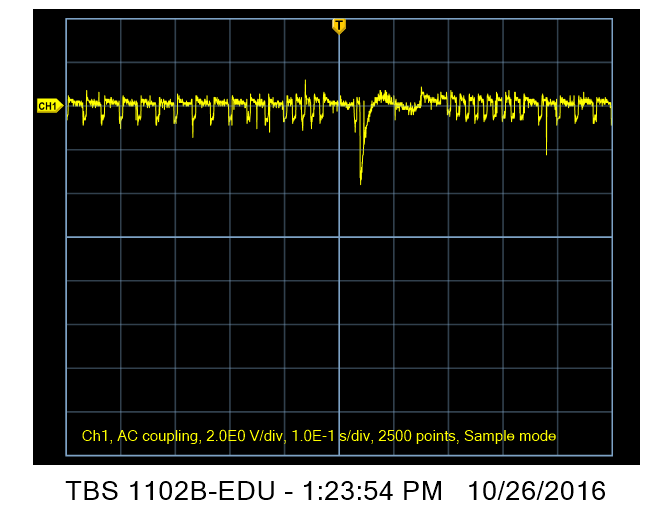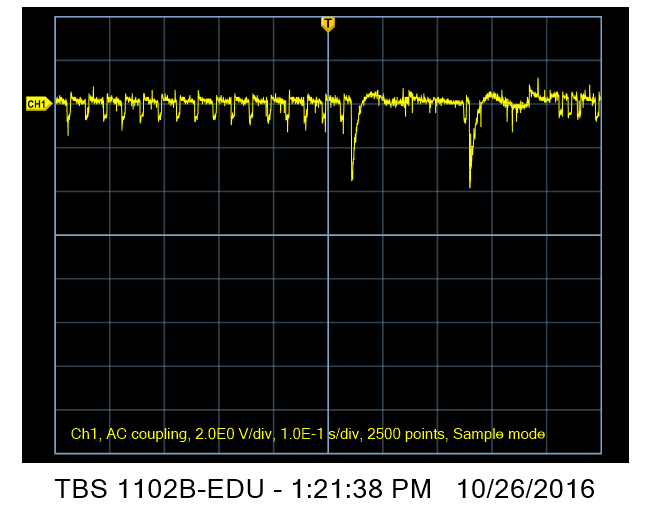I reported here on a7RII battery current draw measured statically. I have been working on developing ways to do dynamic measurements. I’m not there yet; I have been momentarily stymied by the camera’s apparent need for a low-resistance power supply when powering up, and I am having trouble providing such a low-resistance voltage source and still being able to measure a few tens of microamperes. I’ve got a roll of nichrome wire on order, which should allow me to make small changes in the value of small resistances in series with the voltage source.
In the meantime, I have something interesting to show you. Below are plots of the voltage from a third-party ac power supply with EFCS on and off:

You can see the voltage drop suddenly as the shutter is wound at the end of the exposure. Each division on the horizontal axis is a tenth of a second.

With EFCS on, you can see that the shutter gets wound twice. The first time is before the exposure, and the second time is after. The two operation occur a bit over 200 milliseconds apart. The shutter speed was 1/25 of a second (40 milliseconds), so it appears that the delay between the initiation of the first shutter wind and that of the second is about a fifth of a second.
The ac power supply ripple is considerable during the periods when the shutter is idle, but is reduced when the shutter is actually being wound. It doesn’t always have a fundamental of a multiple of the power line frequency, so we may be looking at the camera’s current requirements changing quite rapidly. You’ll also note a change in the ripple just before and just after the shutter winds. I’ll probably have more to say about that when I get my current measurement scheme working. It looks like the nichrome wire won’t be here until next week, so be patient.
[…] draw, and it was clear that the way the current varied with time was interesting. When I did some rough dynamic tests of voltage variation in operation — which I took as a possible proxy for current variation — it appeared that the current […]